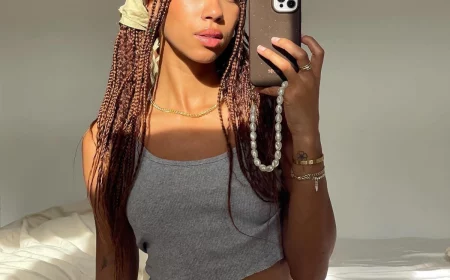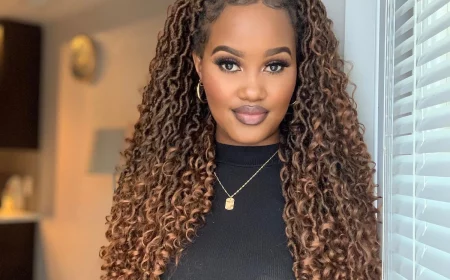The Honest Truth About the Long Wolf Cut: A Stylist’s Guide
I’ve been a stylist for a long time, and I’ve seen trends explode and then fizzle out. But some cuts, like the long wolf cut, have serious staying power. Why? Because they’re built on solid techniques that just plain work. The first time a client showed me a photo, I remember thinking, “Ah, so the shag and the mullet had a baby.” And honestly, I wasn’t wrong, but it’s so much more than that.
In this article
- So, What’s the Secret? Understanding the Structure
- Will It Work for My Hair Type and Face Shape?
- The Salon Visit: What to Expect and What to Ask
- Your At-Home Toolkit for the Perfect Wolf Cut
- The Nitty-Gritty: Cost, Maintenance, and the Dreaded Grow-Out
- A Final, Serious Warning: Do Not Try the DIY Ponytail Cut
- Galerie d’inspiration
This cut is a carefully engineered shape that creates incredible movement and volume, and it’s become a go-to for people who want texture and style without sacrificing all their length. It’s not just a messy haircut; it’s an evolution. I want to walk you through how it works, what to ask for, and the honest truth about living with it—the same stuff I tell my own clients so they walk out happy and stay happy.
So, What’s the Secret? Understanding the Structure
A good haircut is all about geometry. The long wolf cut might look wild and free, but it’s built on a very deliberate structure that borrows from two different worlds: the soft, blended layers of a shag and the shorter-on-top shape of a modern mullet. Knowing this helps you figure out if it’s the right move for you.
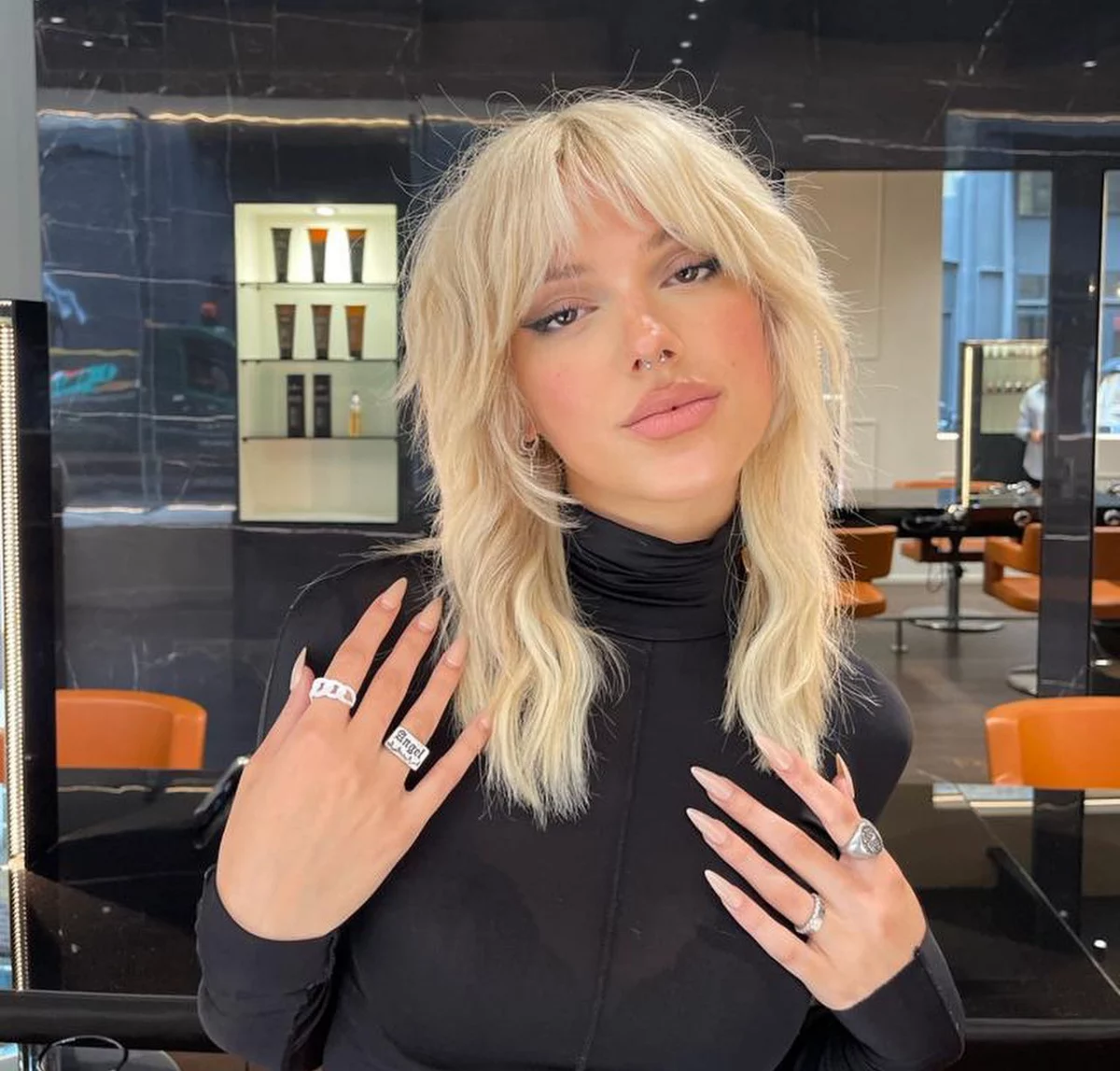
The magic is all in the layering. The hair on top, especially around the crown, is cut significantly shorter than the lengths at the bottom. This is what we call “disconnection”—the top and bottom layers don’t blend together seamlessly like in a traditional cut. Here’s why that’s so effective:
- Volume on Top: Shorter hair is lighter hair. By removing all that weight from the crown, the roots can lift on their own, giving you natural volume without needing a can of hairspray. It’s a structural fix for hair that tends to fall flat.
- Movement on the Bottom: The longer lengths are heavily textured using techniques like slide cutting or deep point cutting. This removes bulk from the inside of the hair, making the ends feel light and piecey so they can flick and move. It’s what prevents the bottom from looking like a heavy, boring block of hair.
- The Face Frame: The front is almost always cut with some kind of curtain bang or shorter, cheekbone-grazing pieces. This connects to the short layers on top, opens up your face, and draws all the attention right to your eyes.
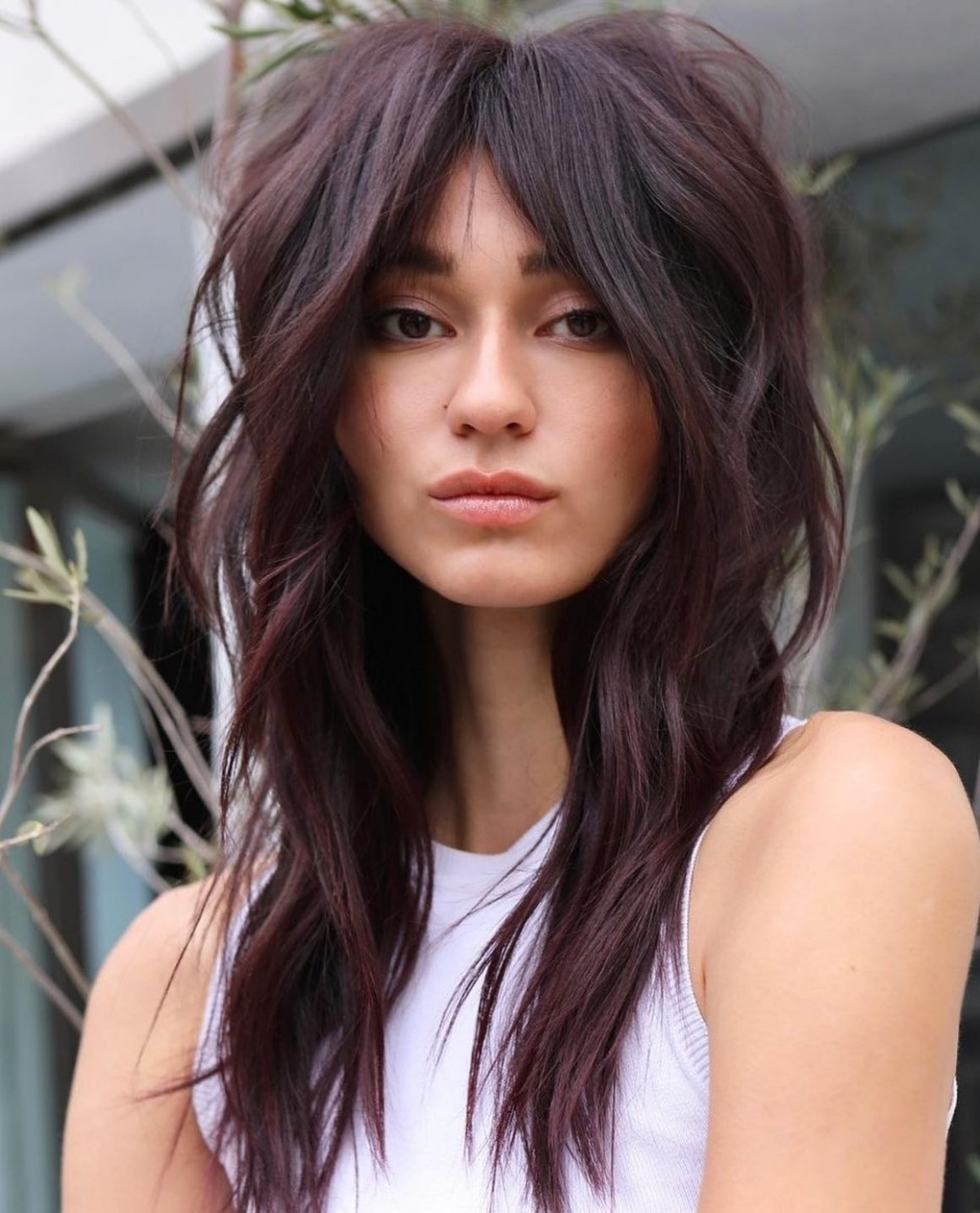
Will It Work for My Hair Type and Face Shape?
Okay, let’s be real. A common mistake is thinking any layered cut works for everyone. The wolf cut has to be adapted, or it can go sideways fast. And since it puts so much focus up front, face shape is definitely a factor.
First, the hair type breakdown:
- For Fine Hair: This is the trickiest one. Go too hard on the layers, and the long sections can look stringy and sad. The key is using what I call “ghost layers.” A stylist should use shears (never a razor on fine hair!) to very lightly skim the surface, creating texture without removing precious density. A strong, solid perimeter at the bottom is a must.
- For Medium to Thick Hair: You’ve hit the jackpot! This is the ideal canvas. The hair has enough density to support the dramatic layers. Here, a pro can get creative with a razor or shears to carve out tons of texture and remove internal weight so the style has all that signature movement.
- For Wavy Hair: A dream come true. The layers remove the weight that pulls your natural waves down, allowing them to spring up like never before. A good stylist will almost always cut this dry, working with your individual wave patterns for the best result.
- For Curly & Coily Hair: This is a whole different ballgame. It becomes less of a standard wolf cut and more of a custom-shaped curly cut (think a “Deva” or “Ouidad” approach) but with a wolf-inspired silhouette. Each curl has to be cut individually to avoid creating weird shelves or gaps. Honestly, for very curly or coily hair, you should seek out a stylist who specializes in your texture. It’s that important.
And what about your face shape? The beauty of the wolf cut is its versatility. The face-framing layers can be tailored:
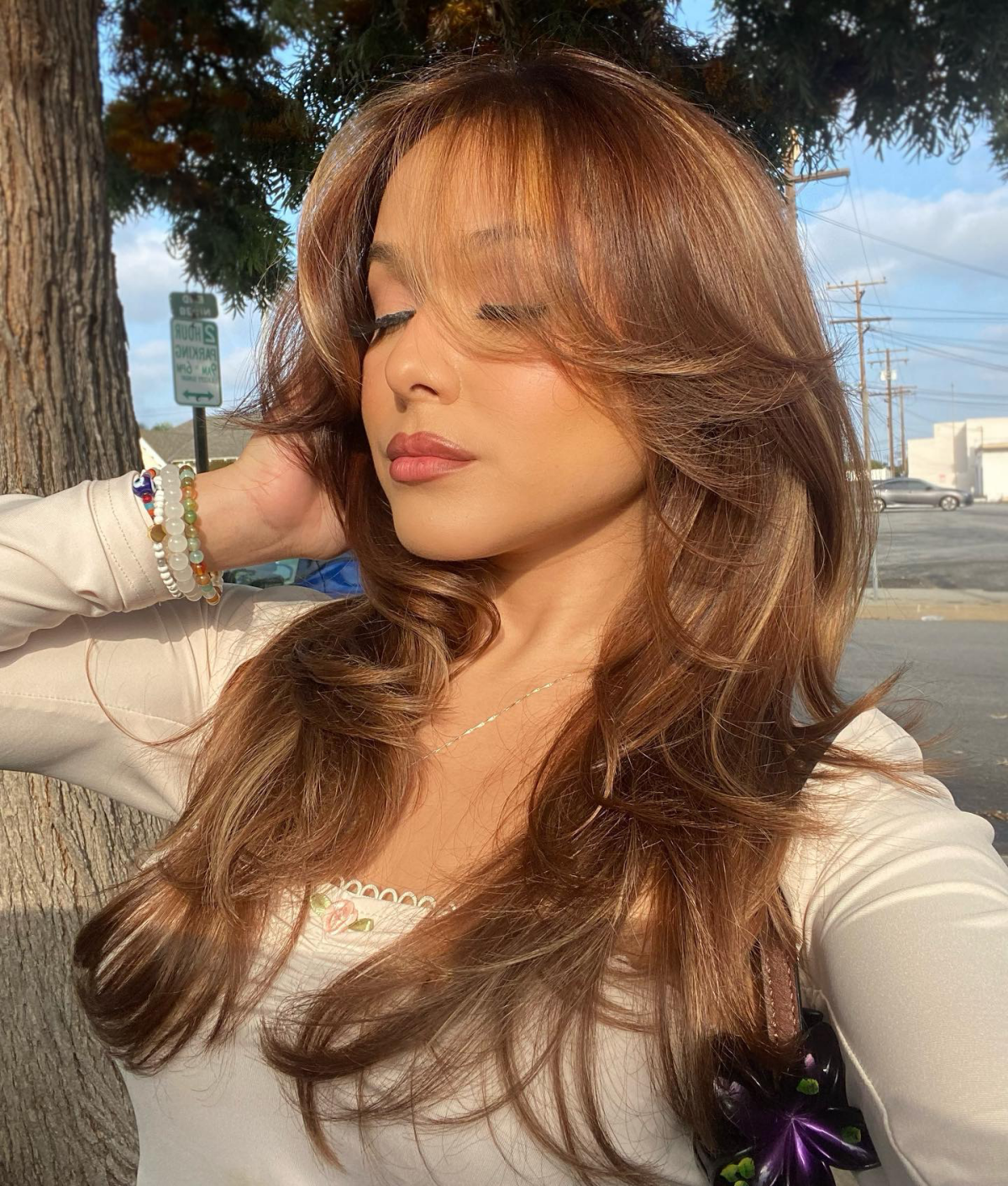
- Oval faces can handle pretty much any version of the cut.
- For round or square faces, the trick is to keep the face-framing layers a bit longer, below the chin, to elongate the face. Avoid short, rounded bangs which can add width.
- For heart-shaped faces, layers that hit right at the chin are fantastic for adding fullness around the jawline, creating a beautiful balance.
The Salon Visit: What to Expect and What to Ask
When you sit in my chair and ask for a wolf cut, the first thing we do is talk. The inspiration photo is the goal, but your hair, lifestyle, and how much effort you’re willing to put in determine how we get there.
So, while your stylist is sizing you up, you should be interviewing them, too! You’re the one wearing the hair, after all. A great stylist will welcome your questions.
Heads up! Here’s what you should ask your stylist:
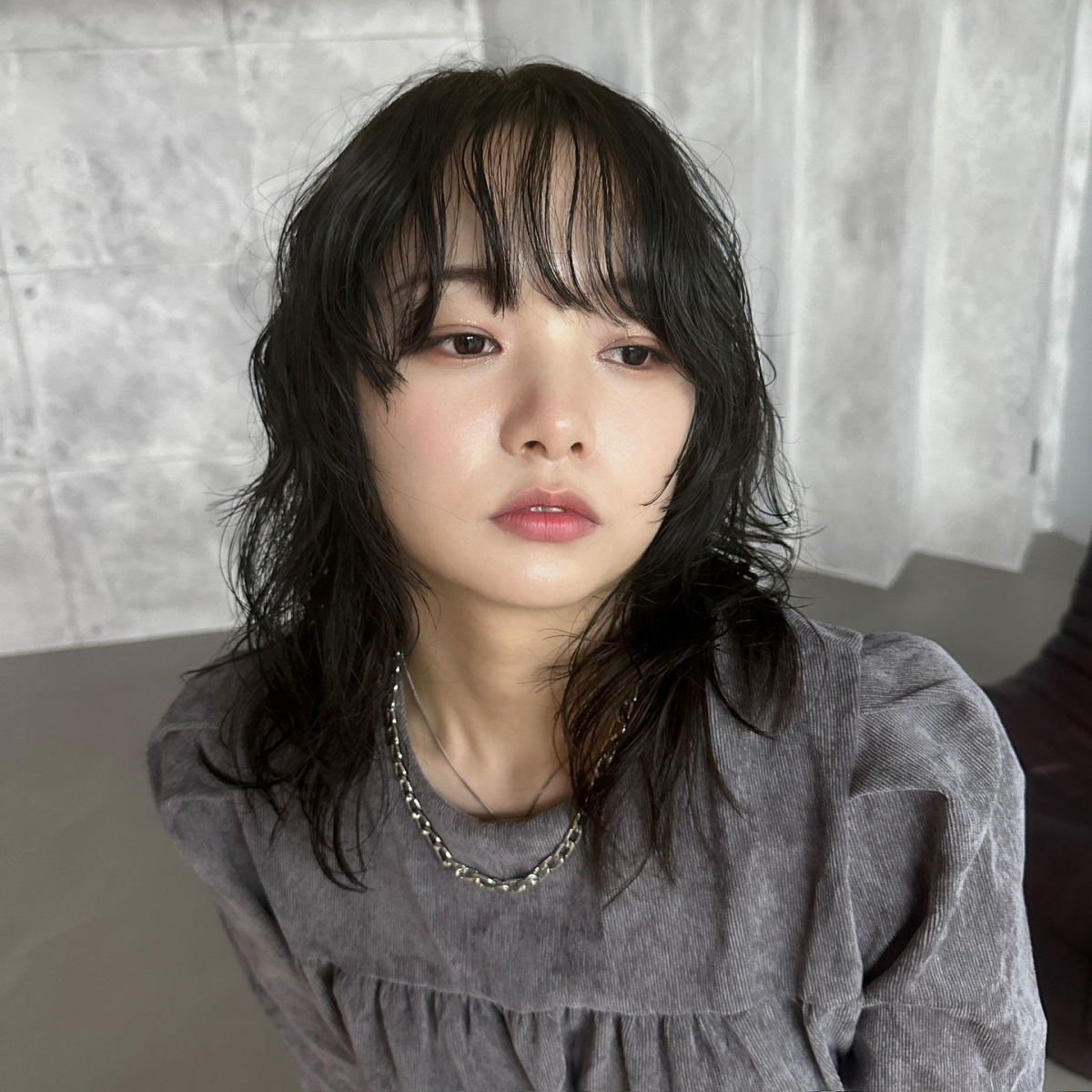
- “How are you planning to adapt this cut for my fine/thick/wavy hair?”
- “Will you be using a razor or shears today, and why did you choose that for my hair?”
- “How will this cut grow out, and what will the maintenance look like?”
- “Based on my hair, how much daily styling do you think this will really take?”
Asking these questions shows you’ve done your homework and helps you and the stylist get on the same page. It’s the best way to avoid disappointment.
Your At-Home Toolkit for the Perfect Wolf Cut
A great cut is only half the battle. You don’t need a million products, but you absolutely need the right ones to make it look effortless.
I usually send my clients home with a simple three-step system:
- A Foundation Product (on damp hair): A volumizing mousse at the roots gives that lift, and a sea salt spray from the middle to the ends creates that perfectly undone, piecey texture. For a great budget option, the Not Your Mother’s Beach Babe Texturizing Sea Salt Spray is a classic. If you want a salon-quality feel, the Bumble and bumble Surf Spray is iconic for a reason.
- A Finishing Product (on dry hair): A dry texturizing spray is your best friend. After your hair is dry, flip it over, spray generously, and shake it out. It’s instant cool-girl hair. For defining specific pieces, a tiny bit of styling paste or pomade warmed between your fingers is perfect. I love the Kristin Ess Dry Finish Working Texture Spray from Target, but for a splurge, the Oribe Dry Texturizing Spray is legendary.
- A Heat Protectant: This is non-negotiable if you ever use a blow dryer or iron. The ends of a wolf cut are already highly textured and more prone to damage. Think of this as your insurance policy.
My Quick 5-Minute Styling Routine:
Want to know the secret to styling it fast? Flip your damp hair upside down. Scrunch a golf-ball-sized amount of mousse into the roots. Lightly mist the ends with salt spray. Then, either let it air-dry the rest of the way or hit it with a diffuser for just 3-4 minutes. Flip your head back up, shake it out, and you’re done!
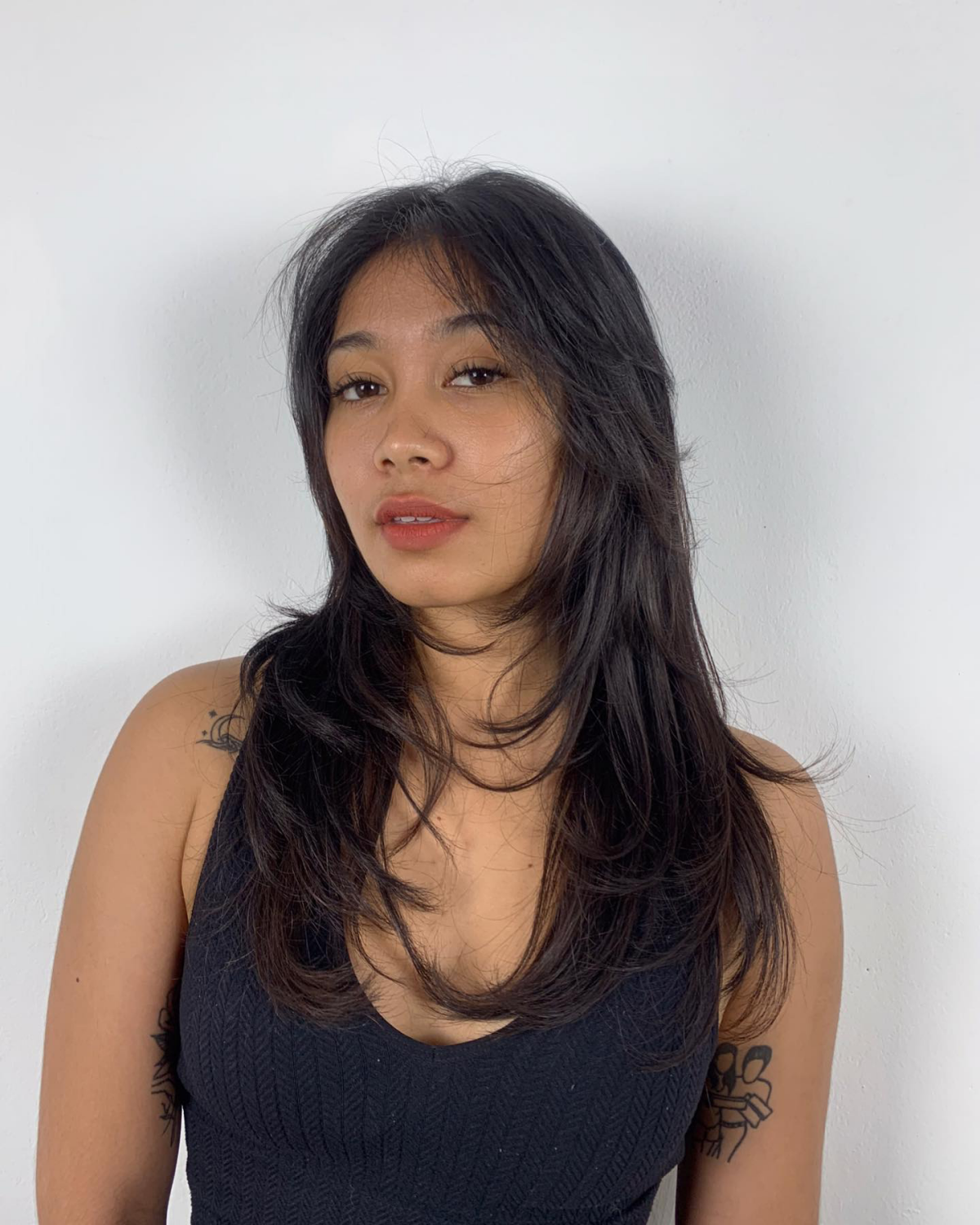
Oh, and for second-day hair? Just lightly mist it with water to reactivate yesterday’s product, give it a scrunch, and maybe blast the roots with a little dry shampoo. Takes 60 seconds, max.
The Nitty-Gritty: Cost, Maintenance, and the Dreaded Grow-Out
Let’s talk money and time. This isn’t your standard trim. Because it’s a specialized, technical cut, you should budget accordingly. Depending on your city and the stylist’s experience level, expect a price tag anywhere from $85 to $250+. The short layers are what give the cut its signature shape, and they grow out the fastest. You’ll likely need a touch-up every 6 to 10 weeks to keep it looking sharp. Many stylists (myself included) offer a quick 15-minute fringe and face-frame trim for around $25-$40 to help you stretch the time between full cuts.
Now, for the part everyone asks about: the grow-out phase. This is a commitment. Those short top layers have to grow down, and there will be an “in-between” stage where it might feel a little mullet-y. You have to be ready for that.
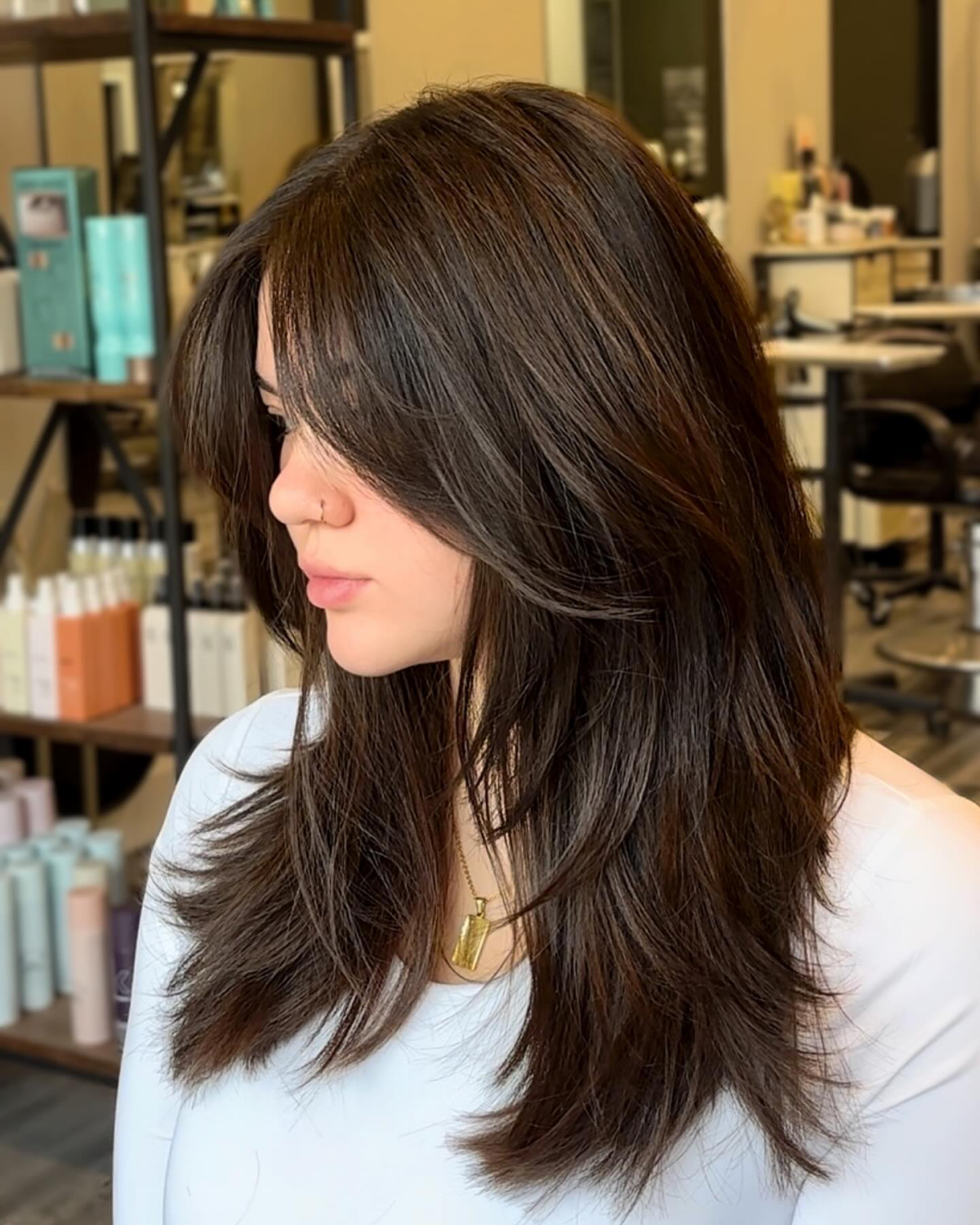
How to Survive the Grow-Out:
When the top layers hit that awkward chin length, don’t panic! This is the time to embrace cute accessories. A stylish clip, a headband, or a half-up style can be a lifesaver. You can also ask your stylist for a “blending” cut, where they soften the corners to help it transition more gracefully into a long shag as it grows.
A Final, Serious Warning: Do Not Try the DIY Ponytail Cut
I cannot say this loudly enough. Please, I am begging you, do not try the viral social media hack where you tie your hair in a ponytail on top of your head and chop it off. It’s a recipe for absolute disaster, and I’ve had to fix more of these than I can count.
From my experience, it never works. I once had a client come into the salon in tears after trying it. The method doesn’t account for your head shape or hair density, and she ended up with a literal ‘hole’ in her layers on one side and a choppy, disconnected shelf in the back. Fixing it required a major intervention, and we had to cut her hair into a very short shag to even things out. The correction cost her nearly $200 and a lot of length. Just don’t do it. A great haircut is an investment worth making in a professional.
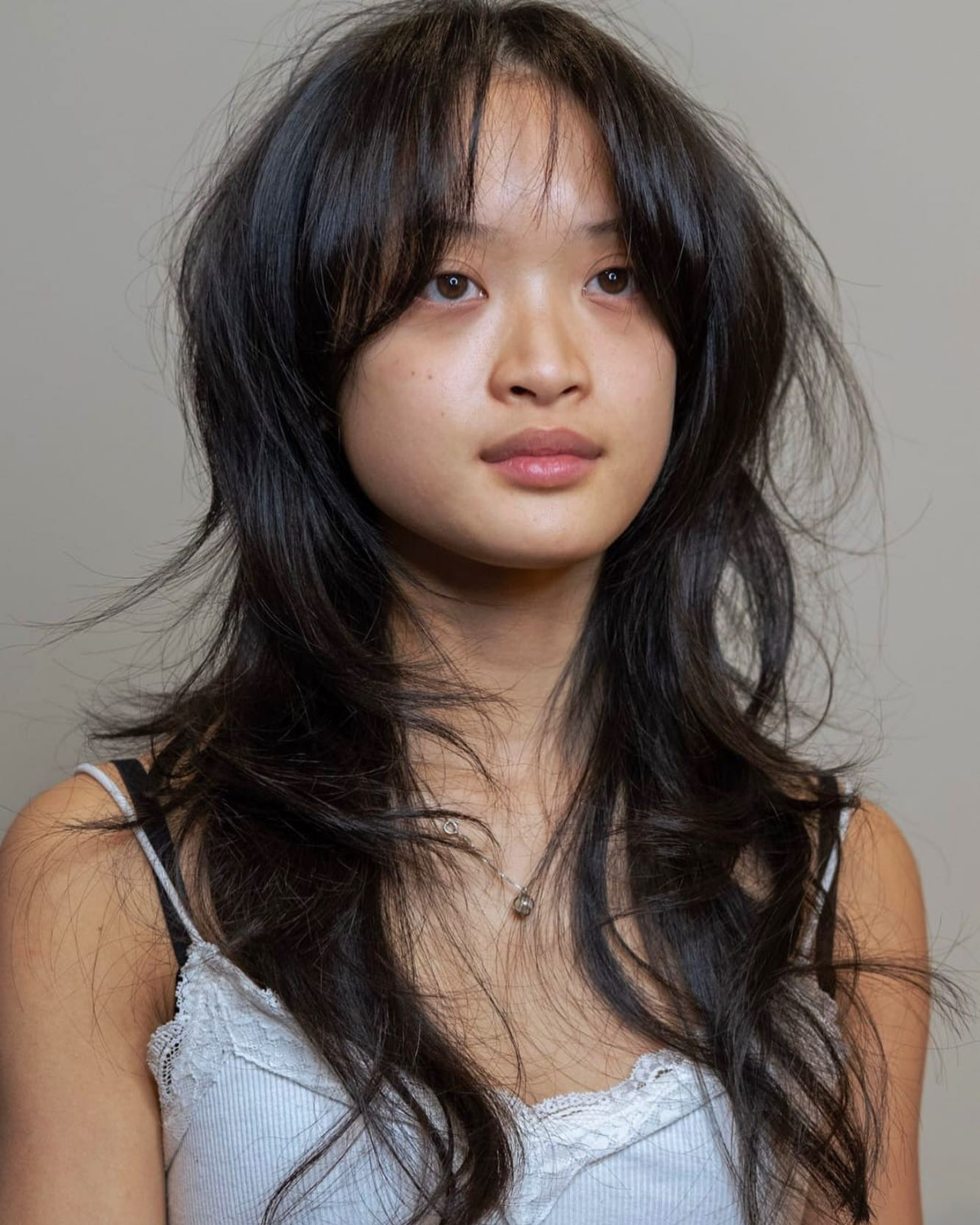
At the end of the day, the long wolf cut is an incredibly freeing and expressive style. It brings life and personality to long hair in a way few other cuts can. With the right stylist, a clear conversation, and a tiny bit of daily effort, it might just be the best haircut you’ve ever had.
Galerie d’inspiration

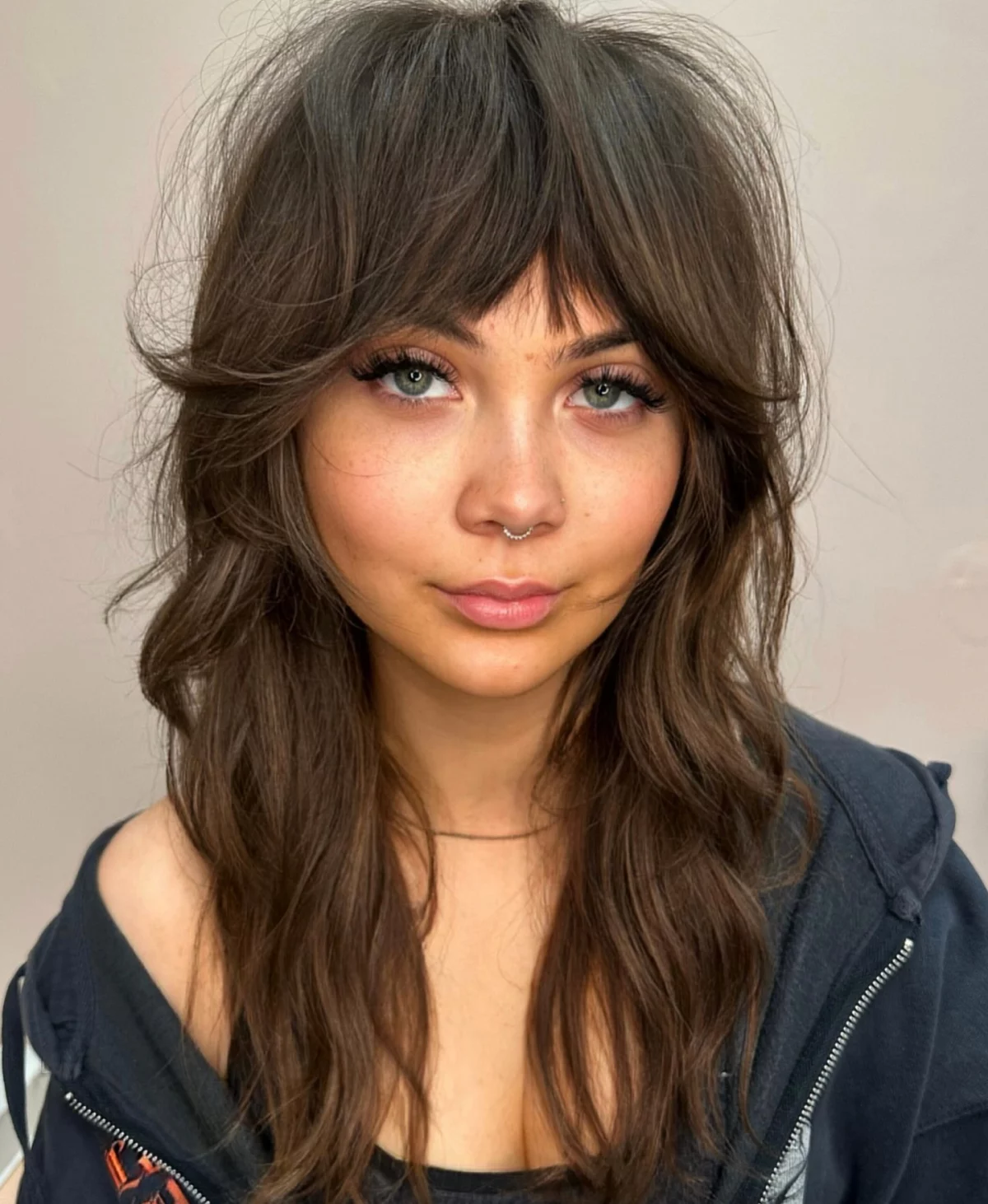
Beyond the mirror, the long wolf cut changes how you move. It’s a haircut you can feel—the lightness at the crown, the way the ends swish against your shoulders. It’s the confidence of a style that looks intentionally undone, an invitation to run your hands through your hair without messing it up, because the “mess” is part of the magic.

According to Google Trends data, searches for “wolf cut” spiked dramatically in mid-2021 and have maintained a high level of interest ever since, cementing it as more than a fleeting fad.
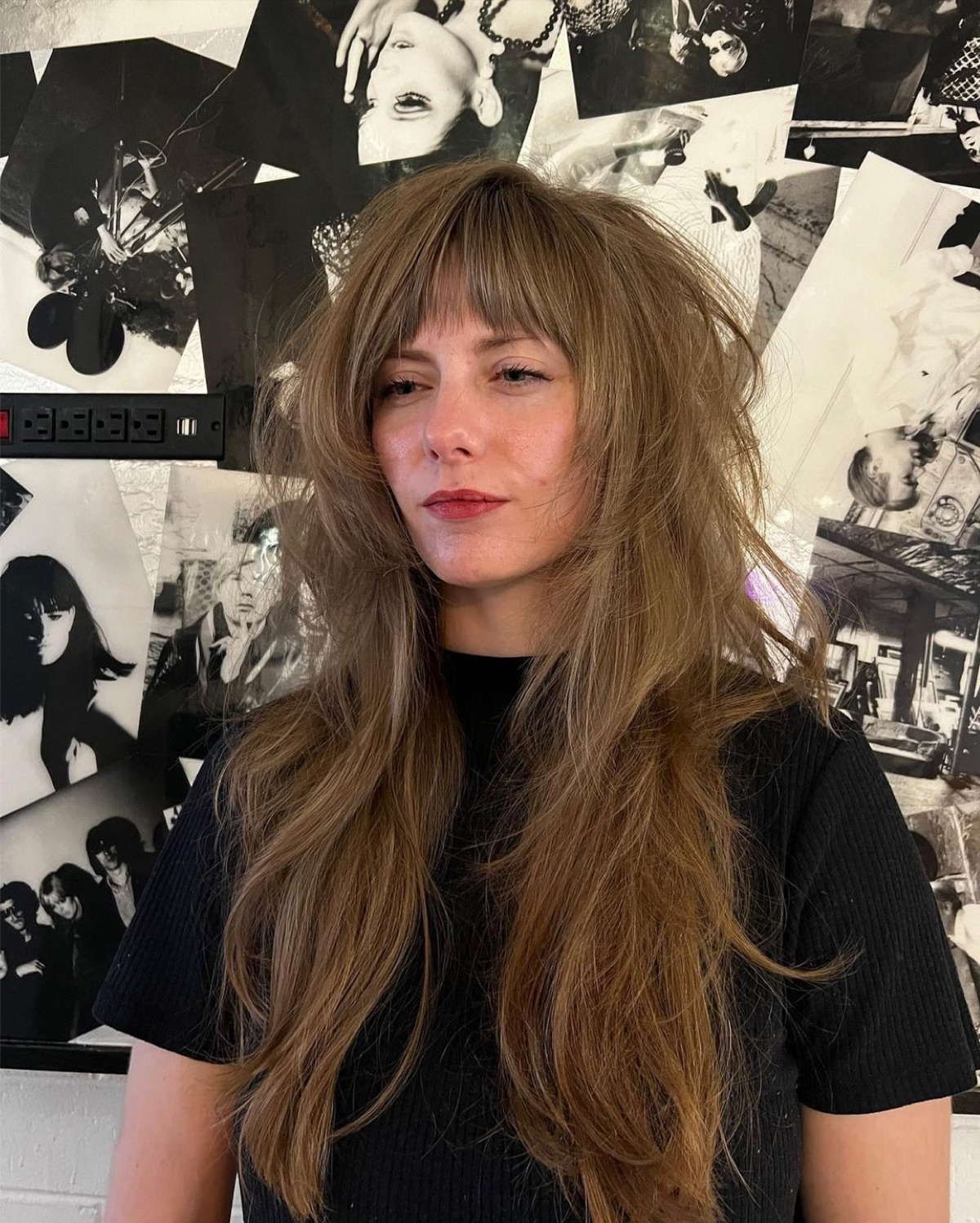
Will this cut work with my curly or wavy hair?
Absolutely, and it might just be the best haircut you’ve ever had. For curls, the layering technique removes the dreaded “triangle” or “pyramid” shape, allowing individual curls to spring up and have their own space. The key is finding a stylist who cuts curly hair dry. This allows them to shape the cut curl by curl, ensuring the layers fall naturally and enhance your texture rather than fighting it.
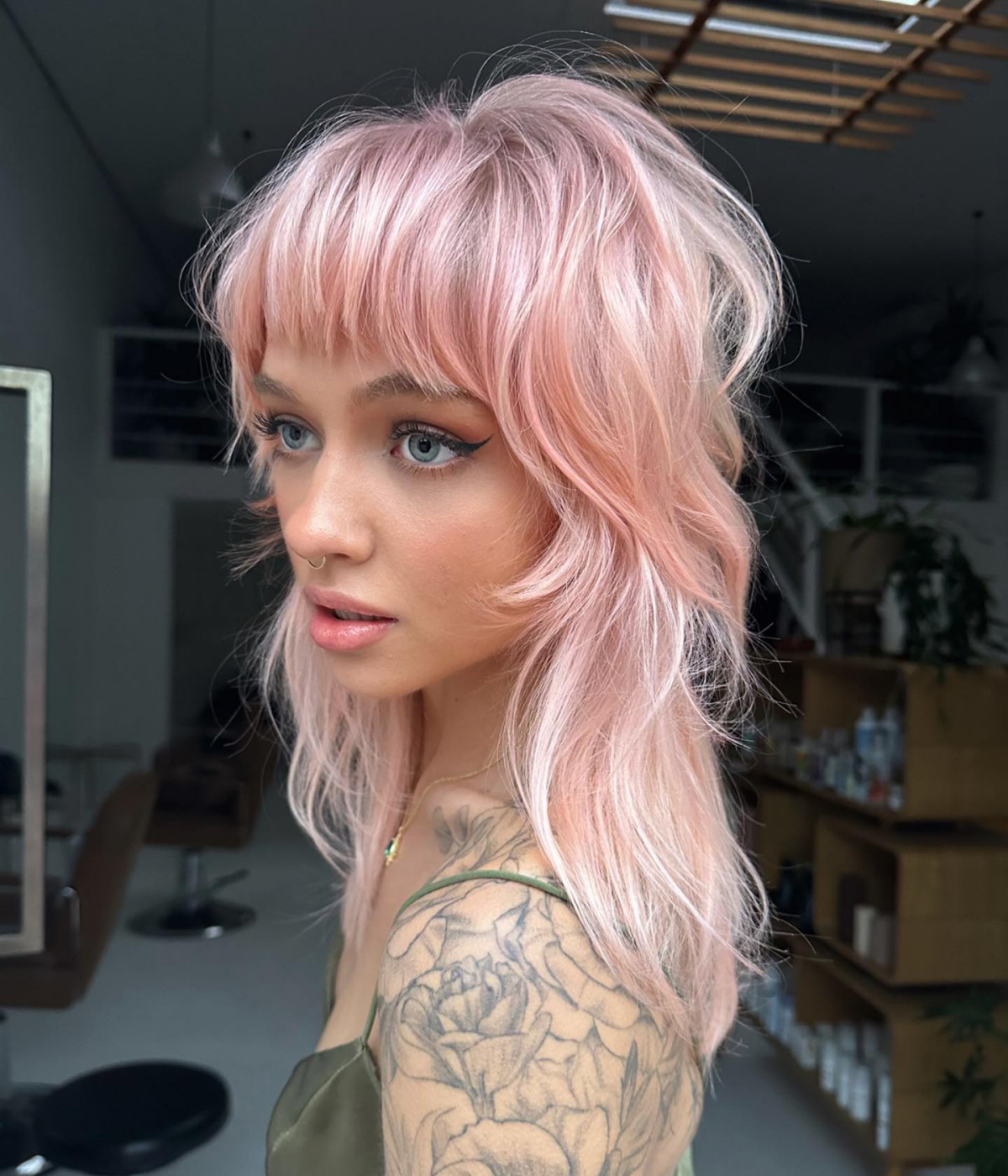
The Wrong Product Pitfall: The number one mistake is using products that are too heavy. Thick creams or oily serums will weigh down the layers and defeat the purpose of the cut, which is all about airy volume. Opt for lightweight stylers that add grit and hold, not weight.
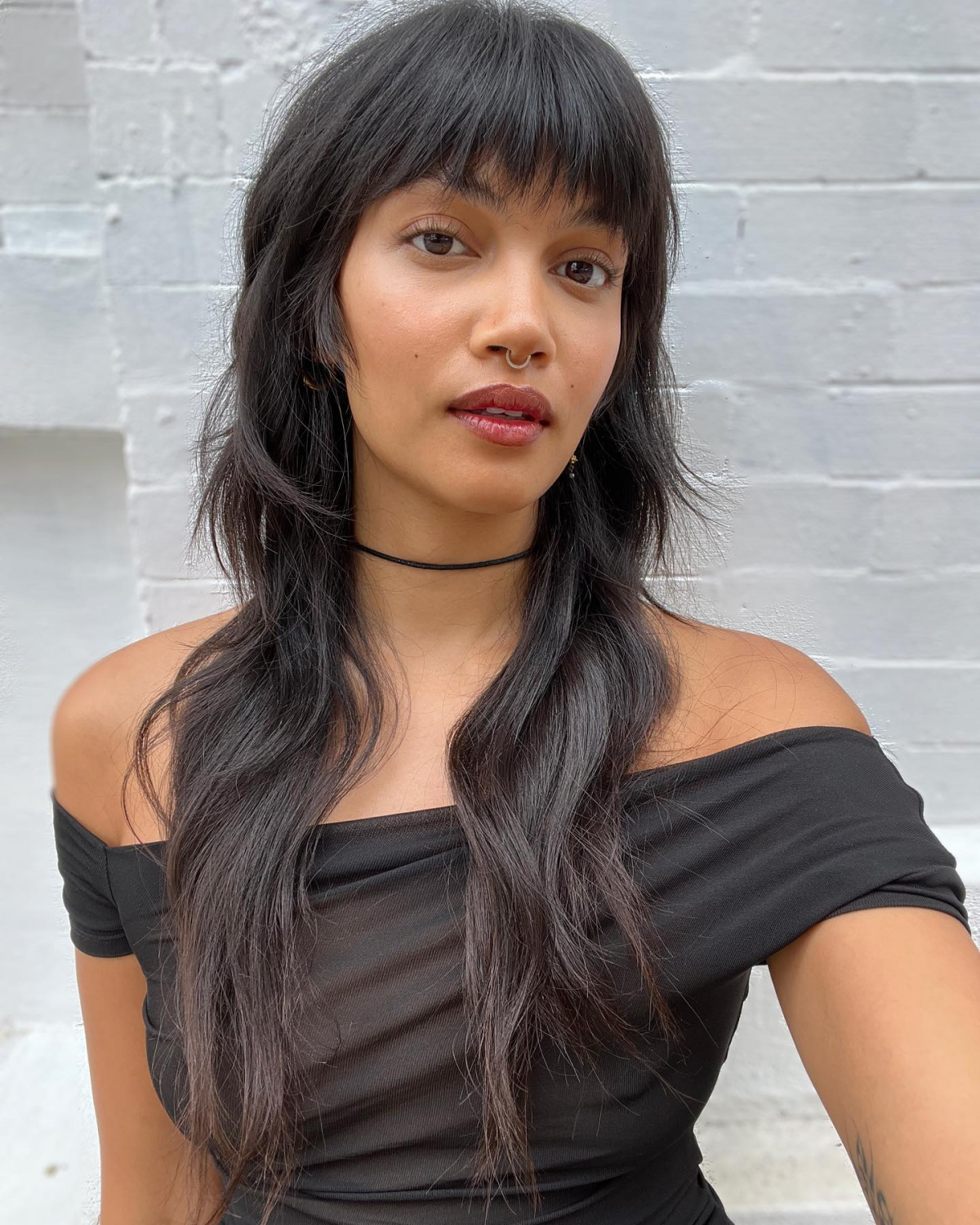
To achieve that perfectly imperfect texture, your choice of styling product is crucial. Here are two champions of the textured look:
Sea Salt Spray: Think Bumble and bumble’s Surf Spray. It gives you a gritty, matte, just-left-the-beach feel. Best for fine to medium hair that needs some help holding a wave. Mist it onto damp hair before air-drying or diffusing.
Texturizing Powder: Like Oribe’s Swept Up Volume Powder, this is for targeted lift right at the roots. It’s dry, invisible, and creates instant volume and a piecey separation. A little puff goes a long way on dry hair.
For the ultimate wolf cut, you might even use both: spray for all-over texture and powder for root lift.
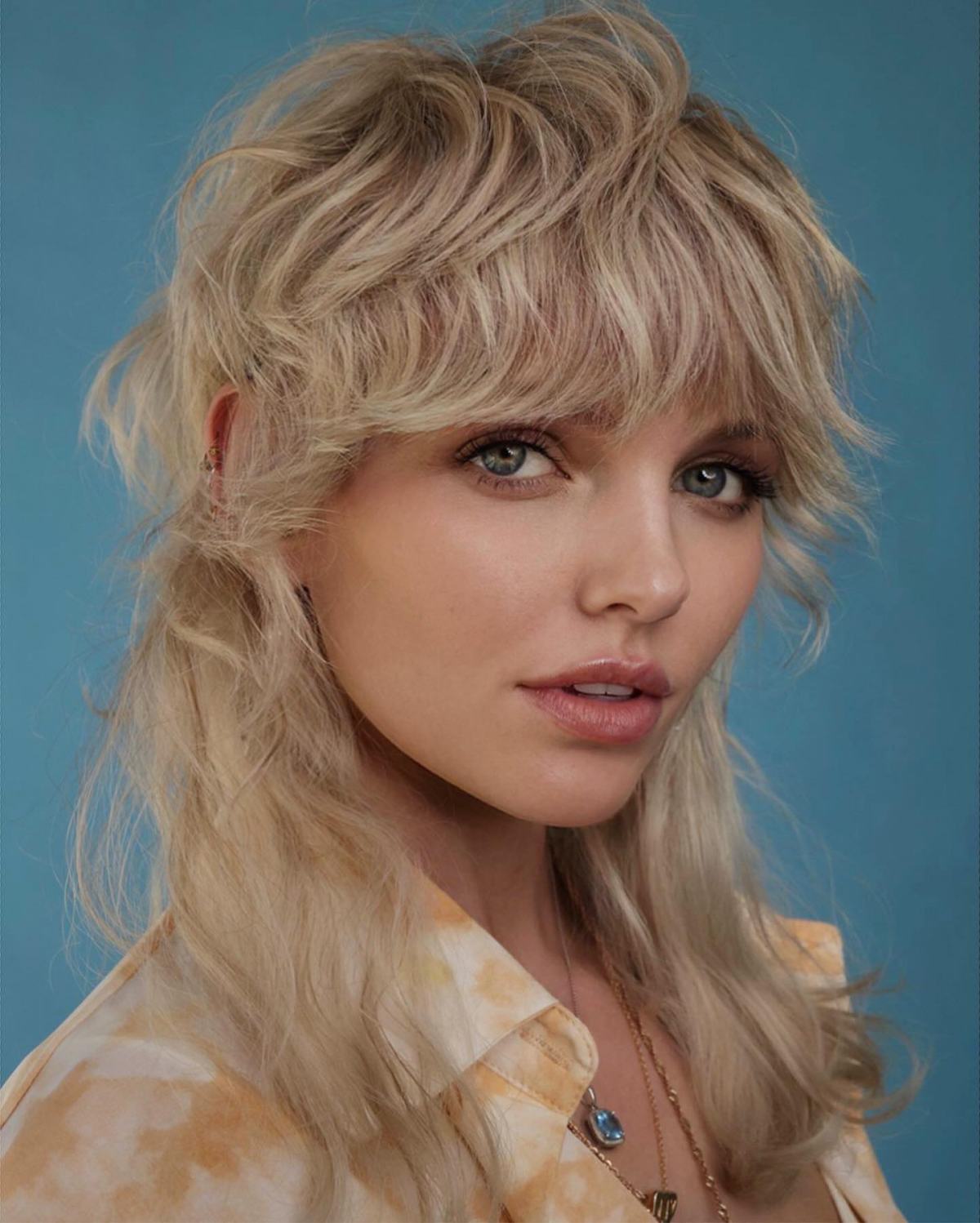
Getting the exact cut you want starts with using the right language. When you sit in the chair, here are a few key phrases to use:
- “I want lots of shaggy layers, but keep the length at the back.”
- “Can we do soft, curtain bangs that blend into the face-framing layers?”
- “I’m looking for volume on top and a wispy feel at the bottom, like a modern shag.”
- “Make sure the layers are disconnected for more movement.”
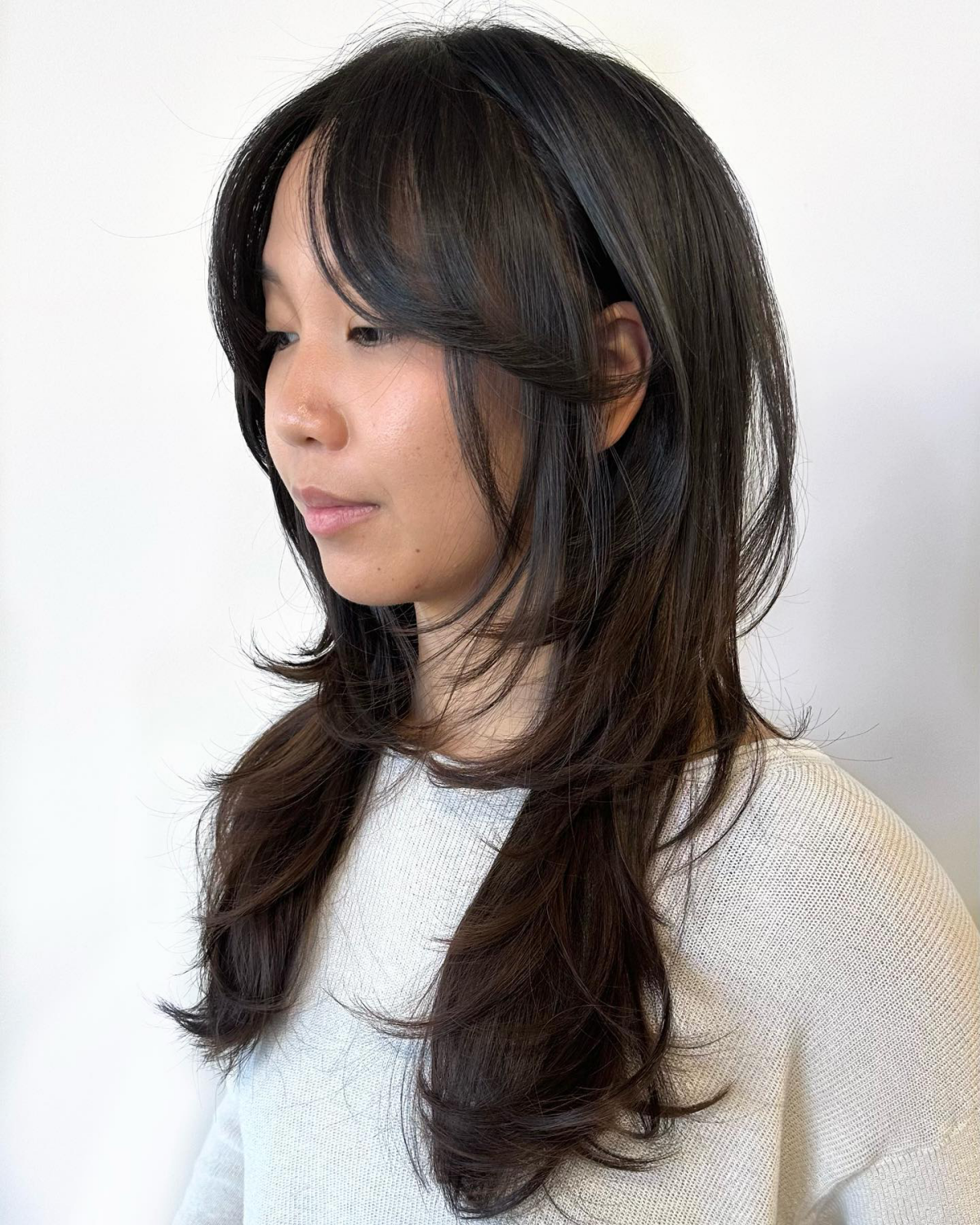
- That effortless, lived-in texture.
- Volume that lasts, even on second-day hair.
- A style that air-dries beautifully with minimal effort.
The secret? A quality texturizing spray is non-negotiable. Spritz a product like Kristin Ess Dry Finish Working Texture Spray throughout dry hair and scrunch. It provides just enough hold and separation to revive the layers without making them stiff.
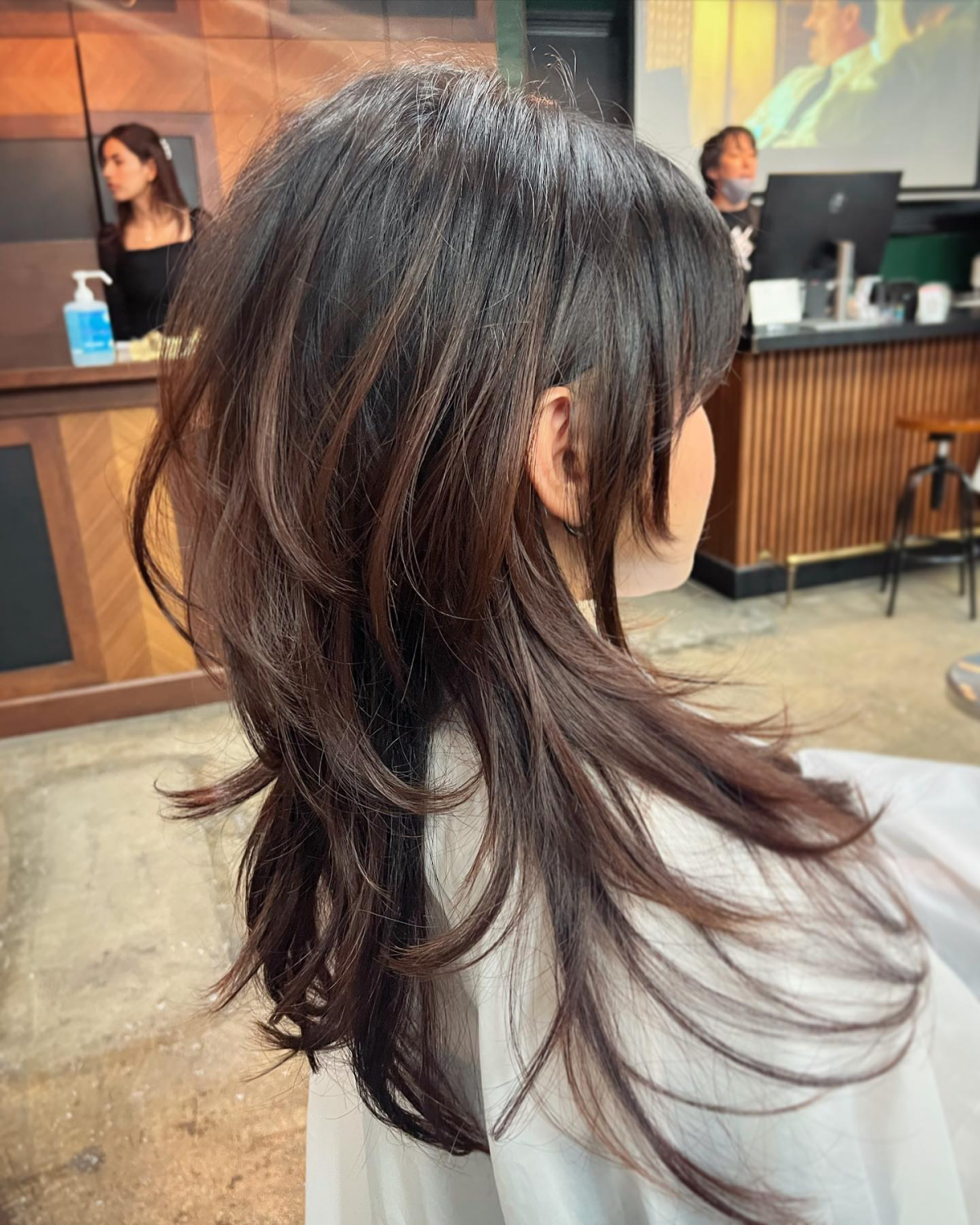
Did you know the modern wolf cut has roots in a style popularized by David Bowie? His iconic layered shag from the Ziggy Stardust era in the early ’70s featured the same shorter-on-top, longer-in-the-back silhouette.
This connection proves that great shapes in hairdressing never truly die; they just get reinterpreted. Today’s version is softer, more blended, and adapted for everyday wear, but its rock-and-roll spirit remains, offering a touch of rebellion to a mainstream look.
- A blow dryer with a diffuser attachment to enhance natural waves without creating frizz.
- A round brush (medium-sized) for styling the curtain bangs and adding volume at the crown.
- A light-hold mousse, like JVN’s Embody Volumizing Mousse, applied to damp roots for lift.
- A dry texturizing spray for finishing and reviving day-old hair.

